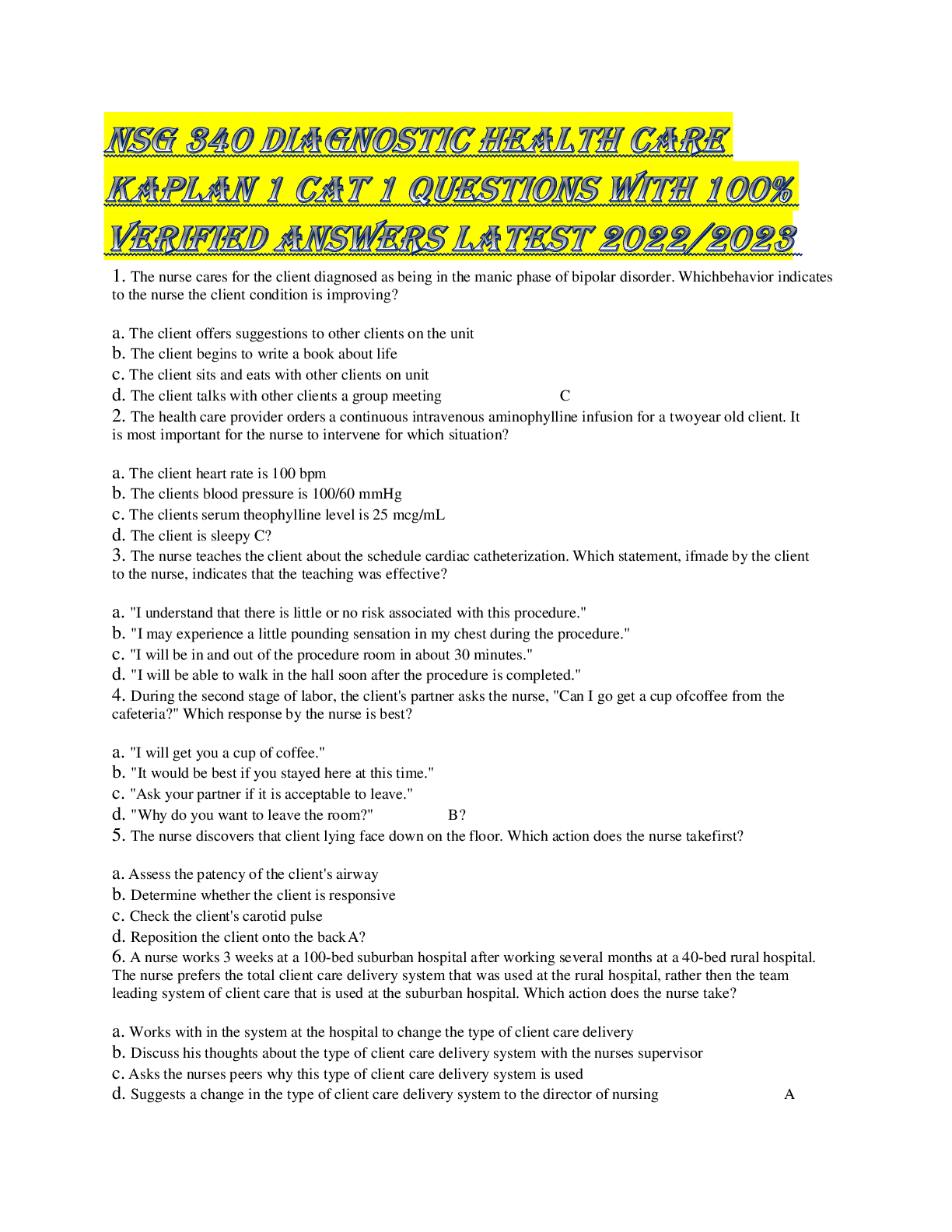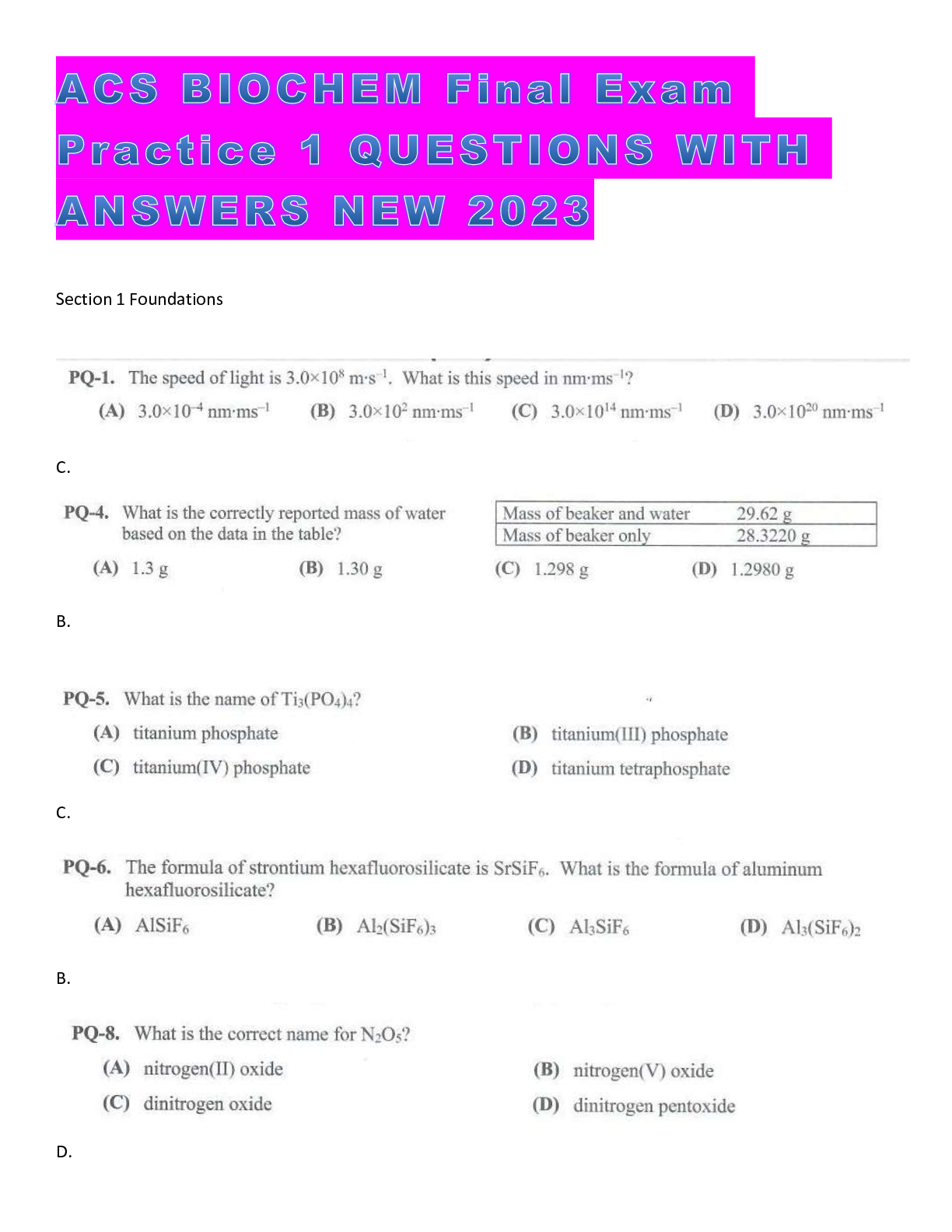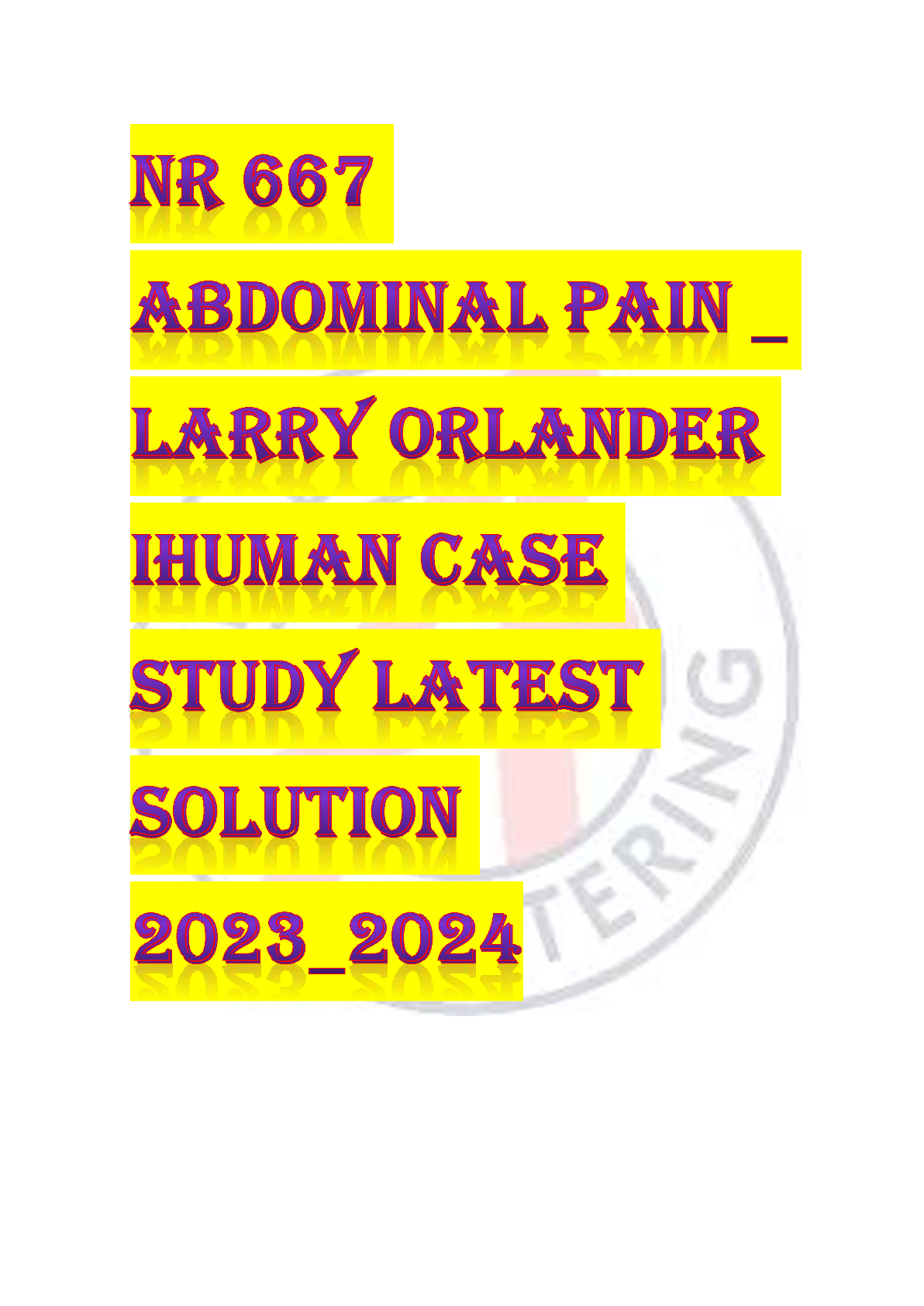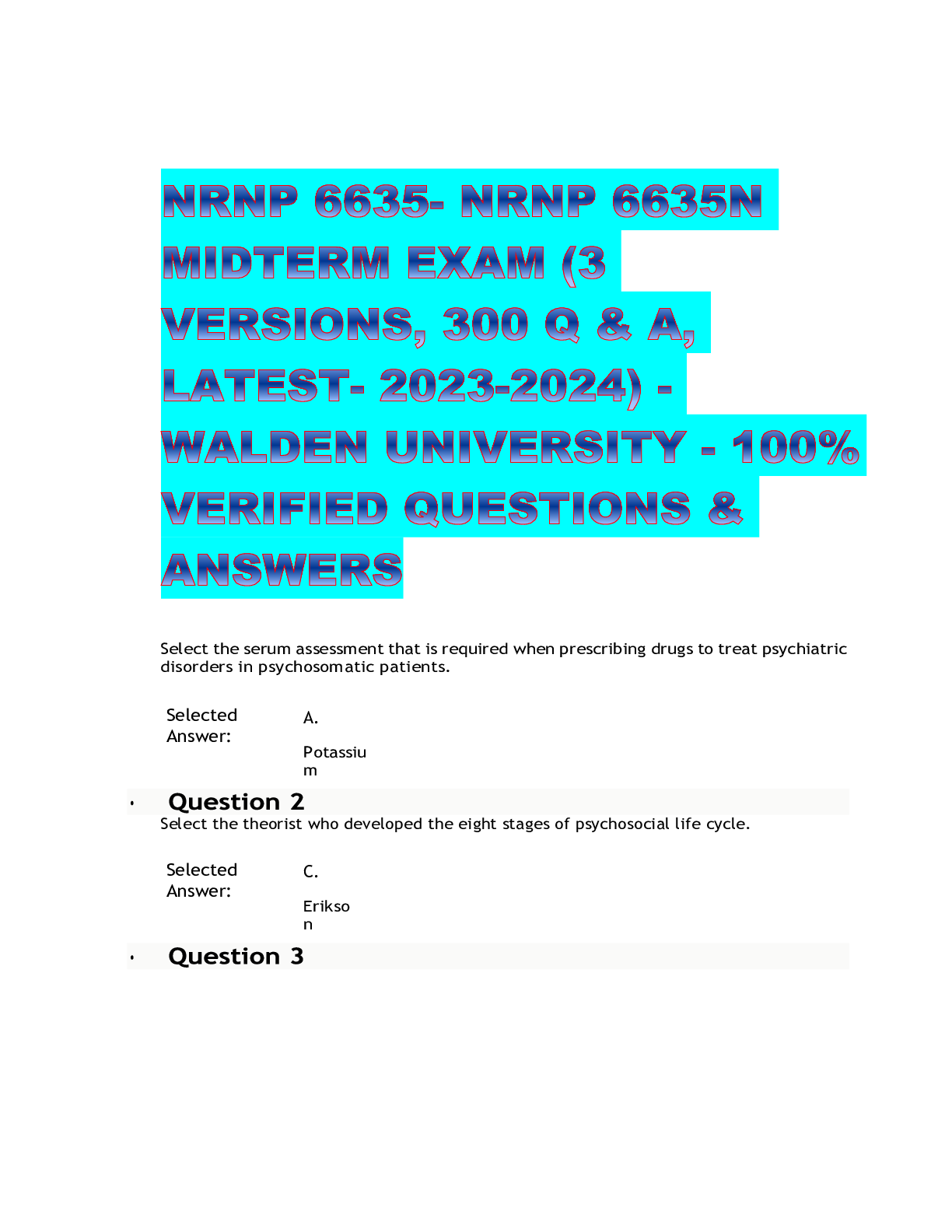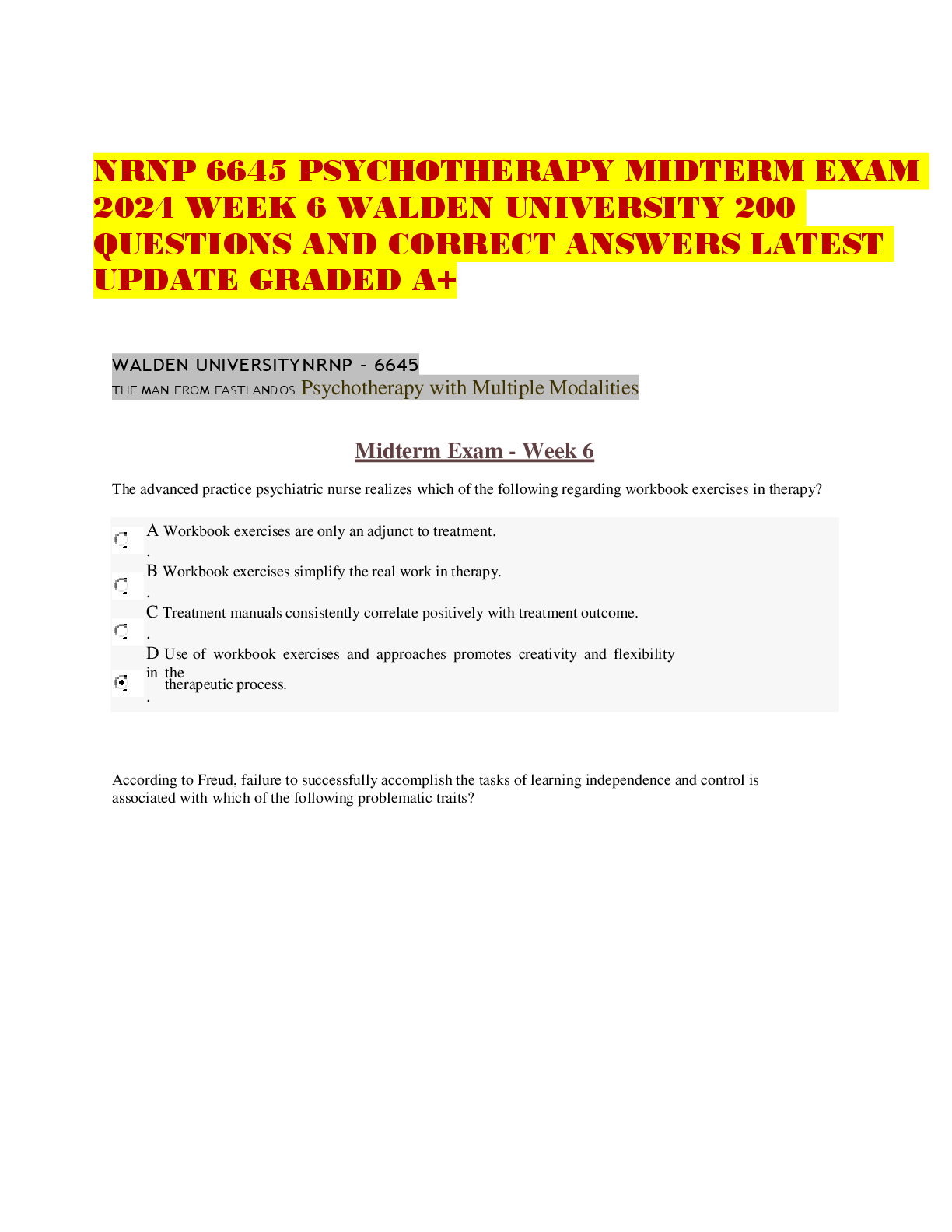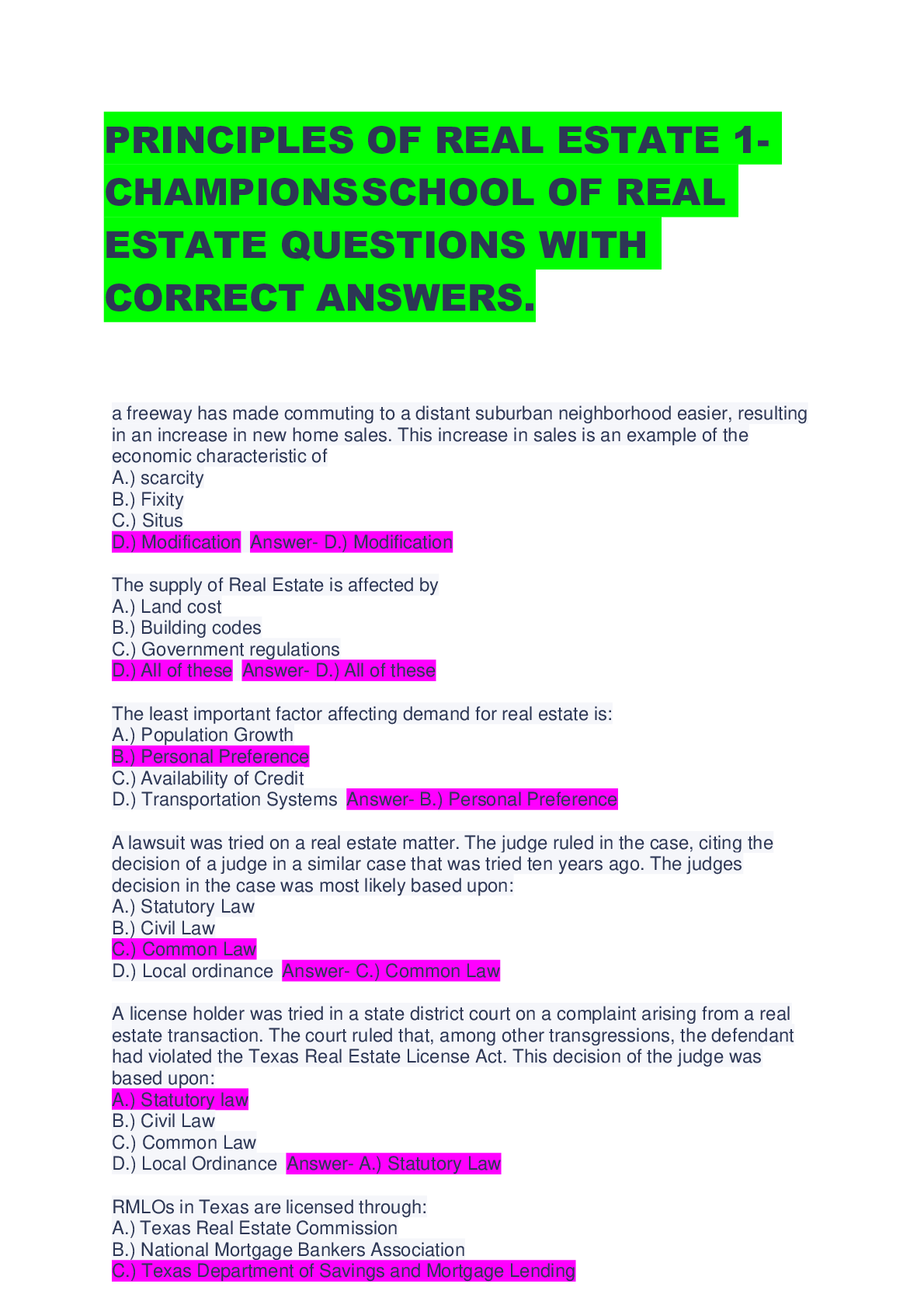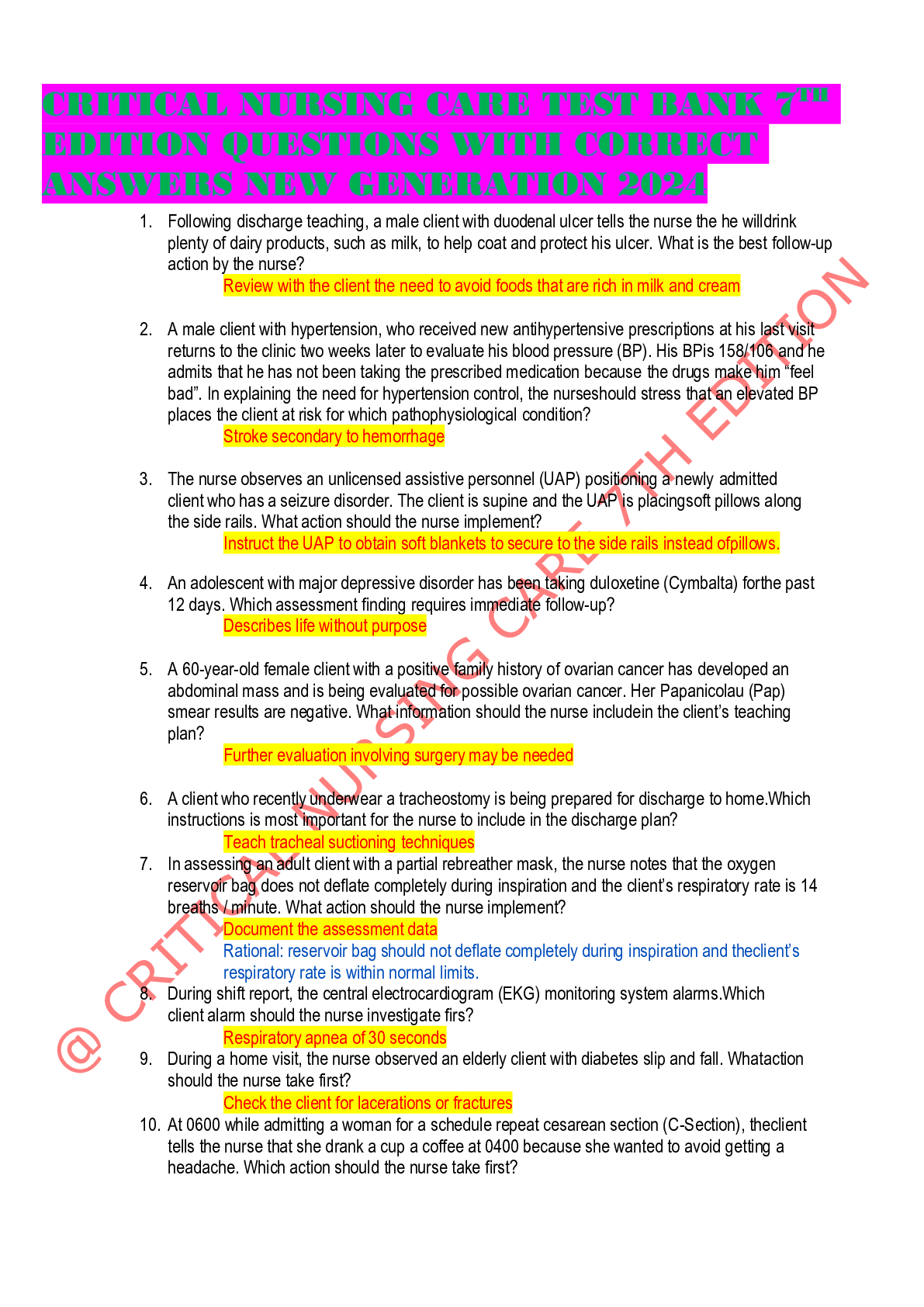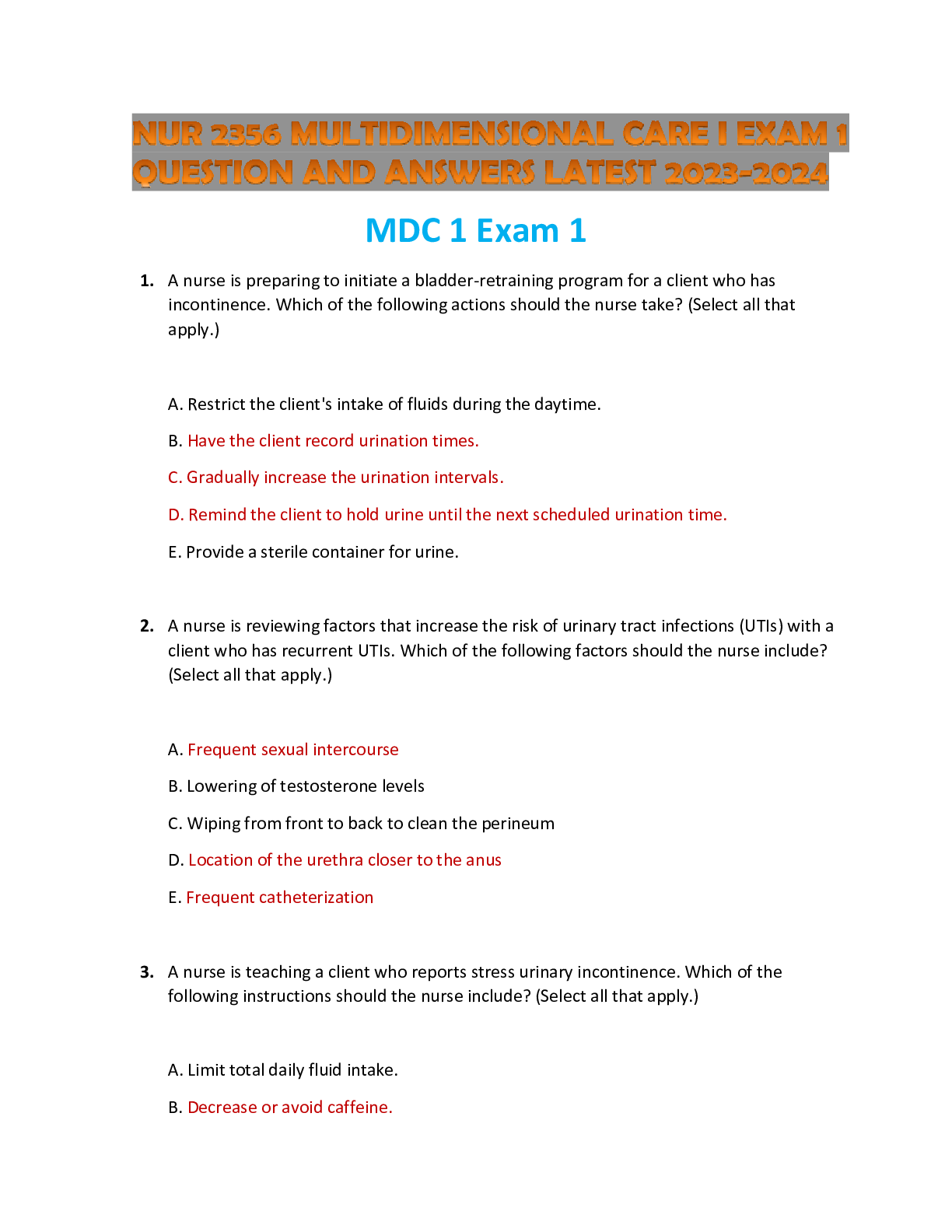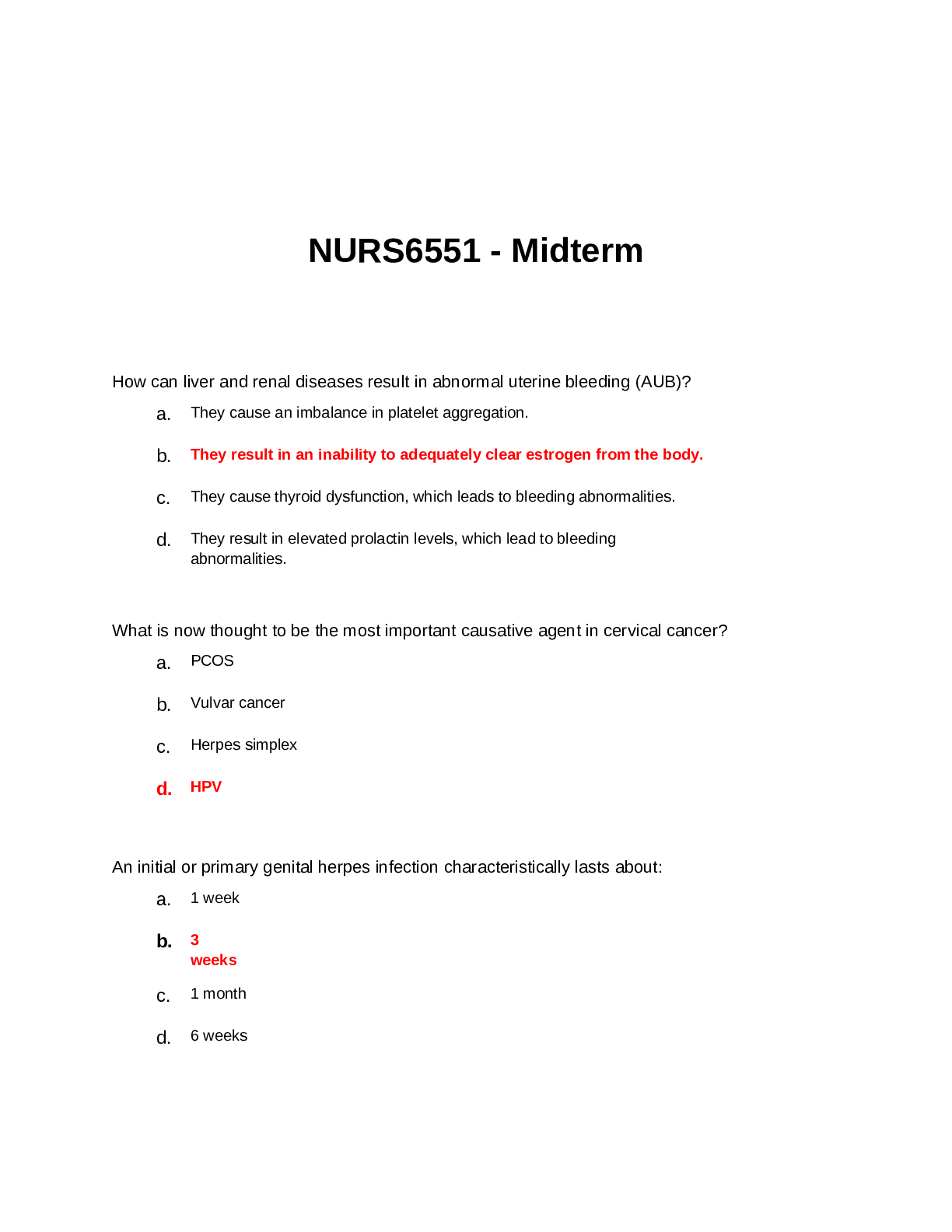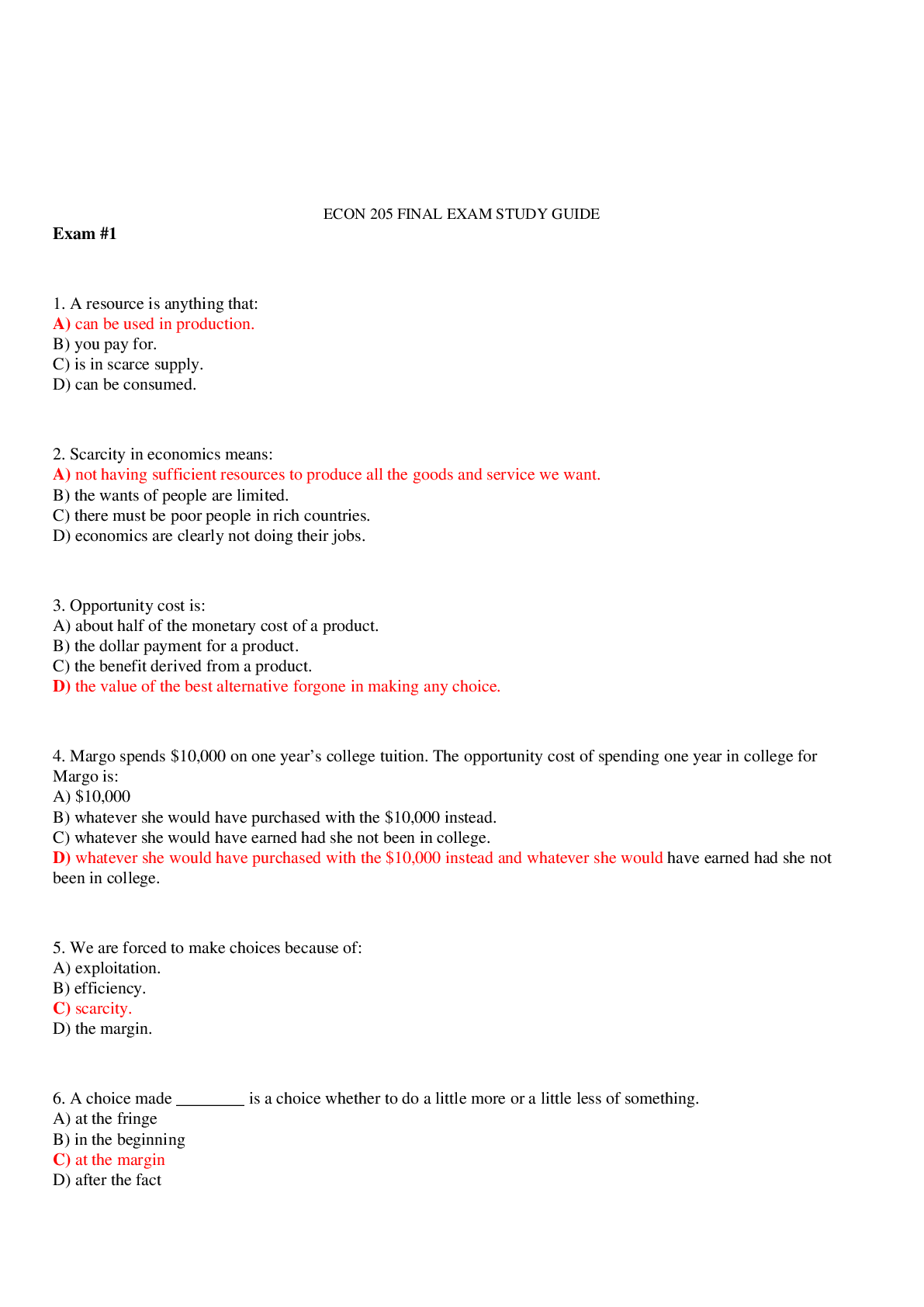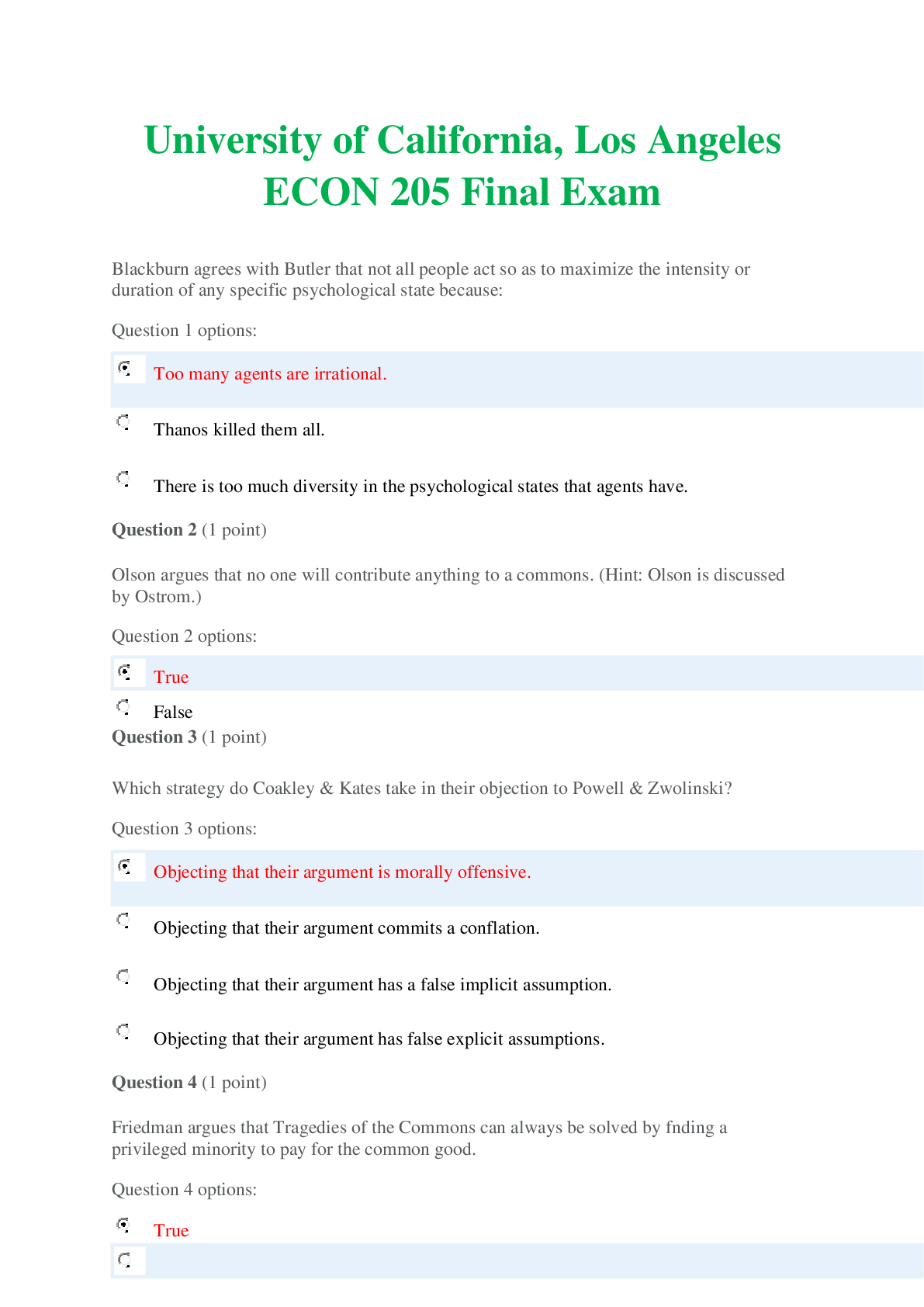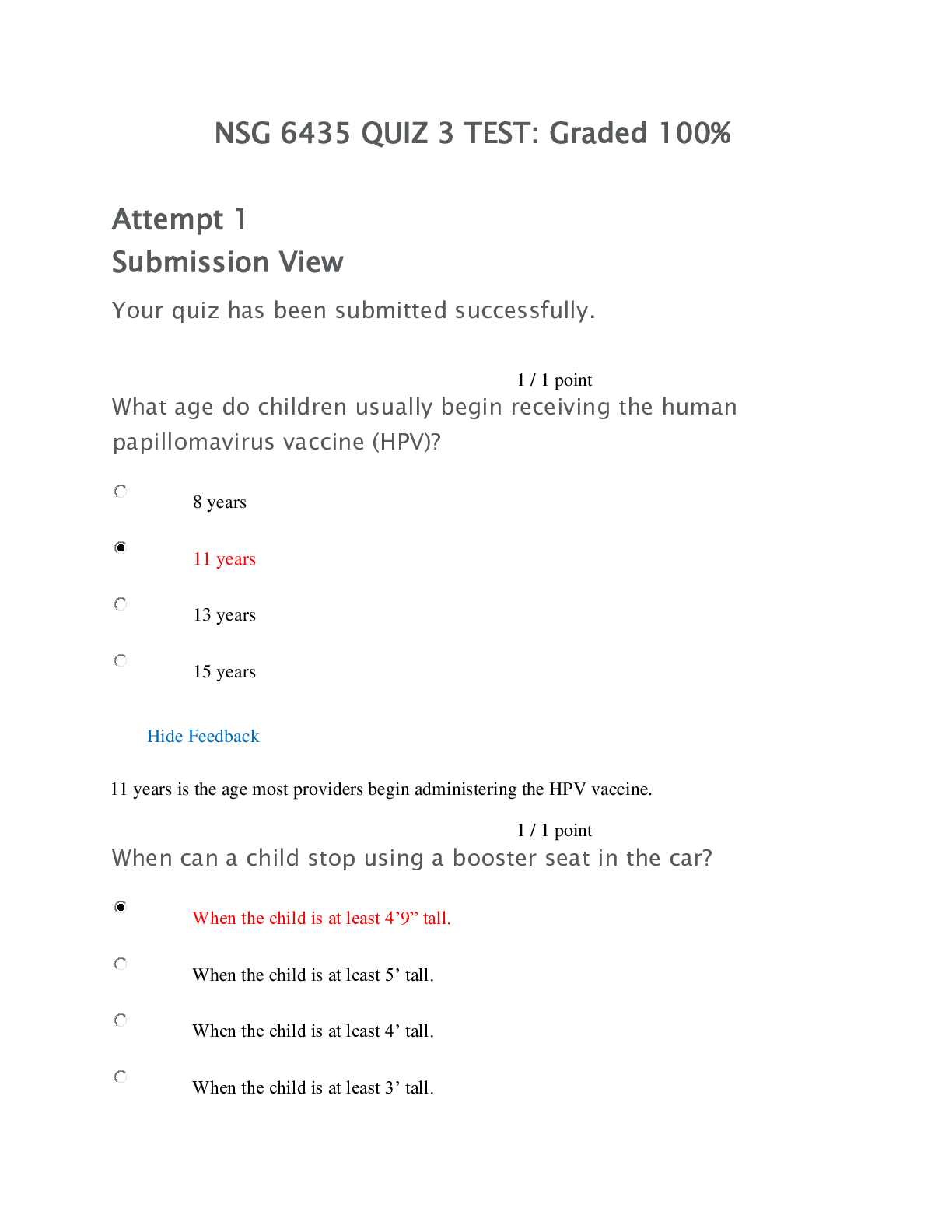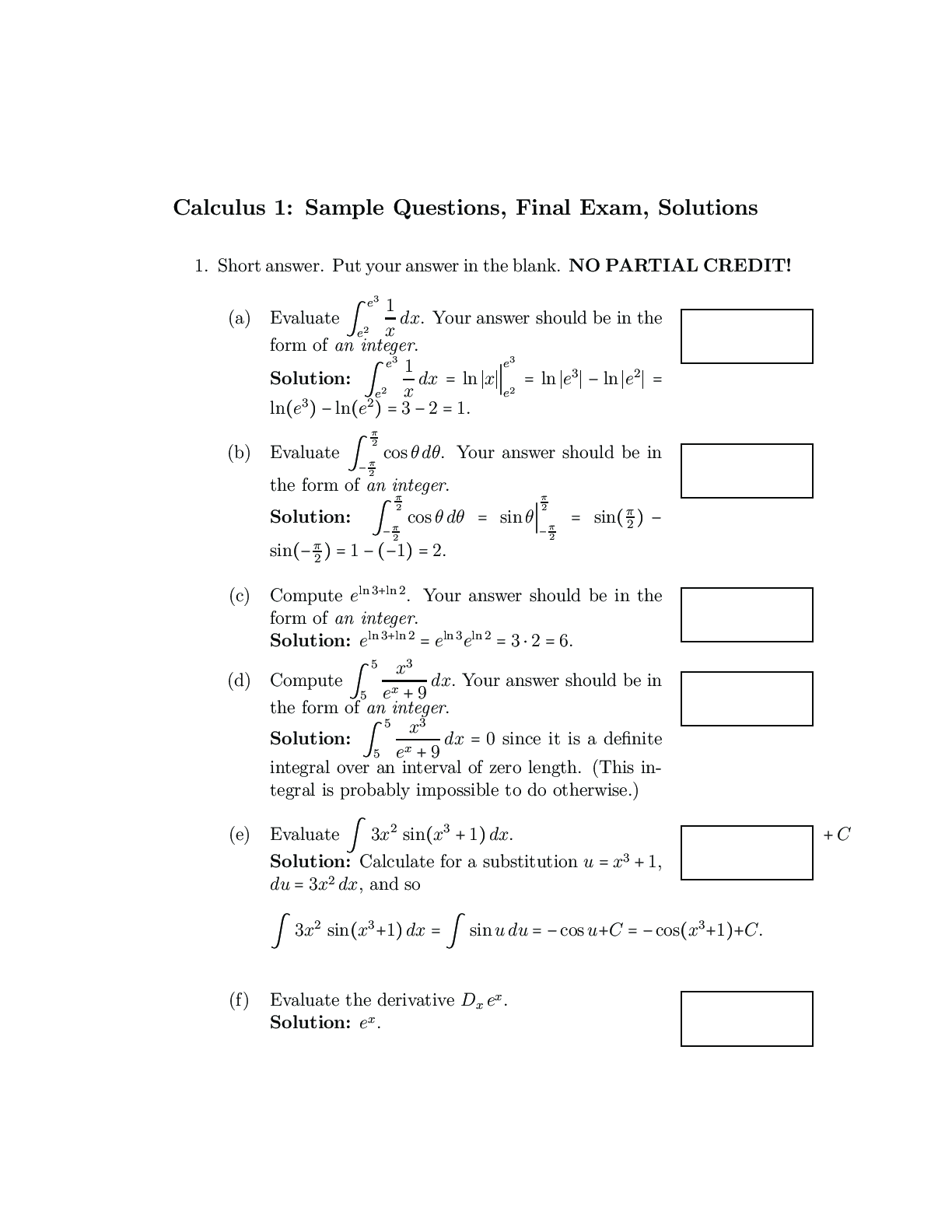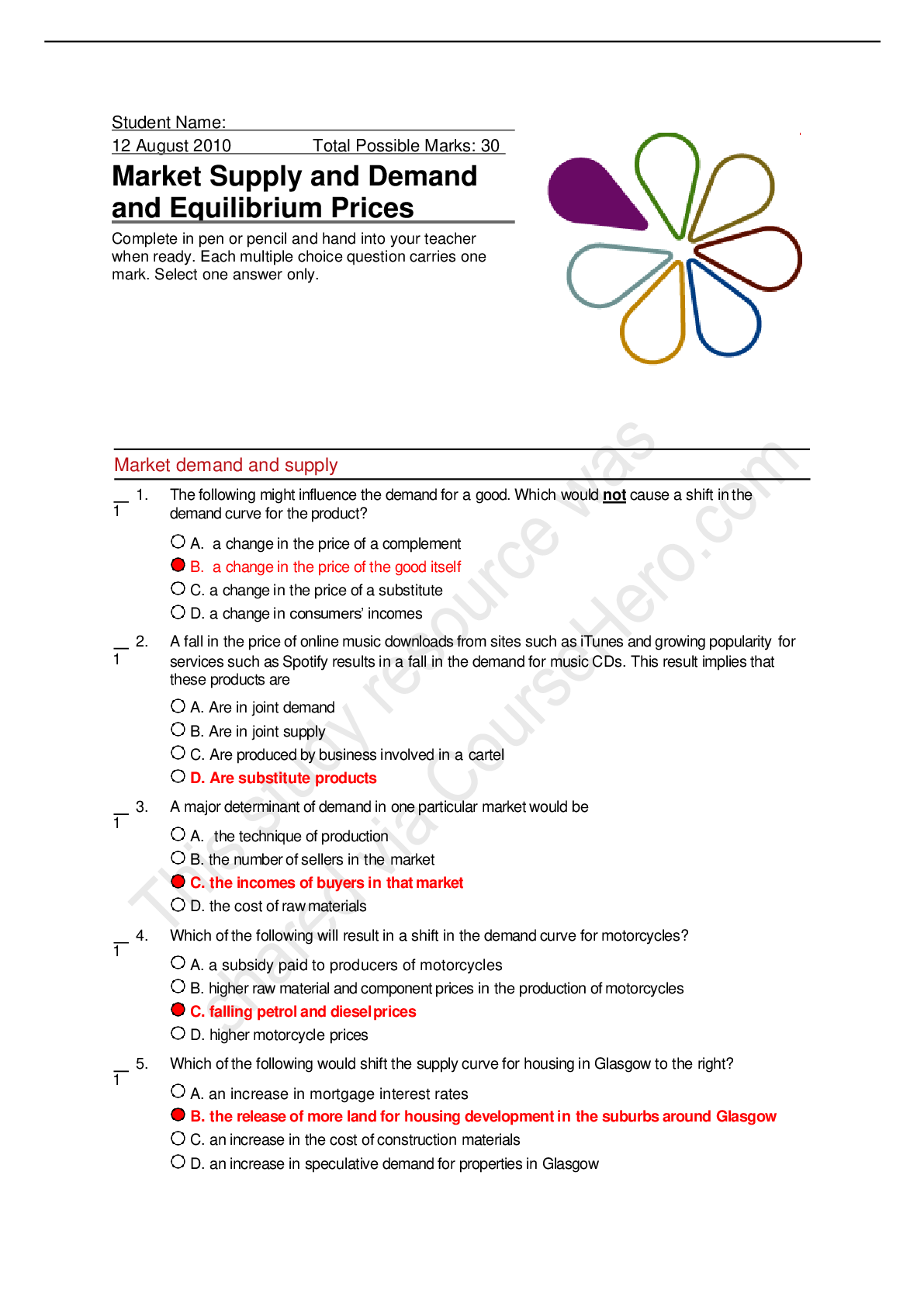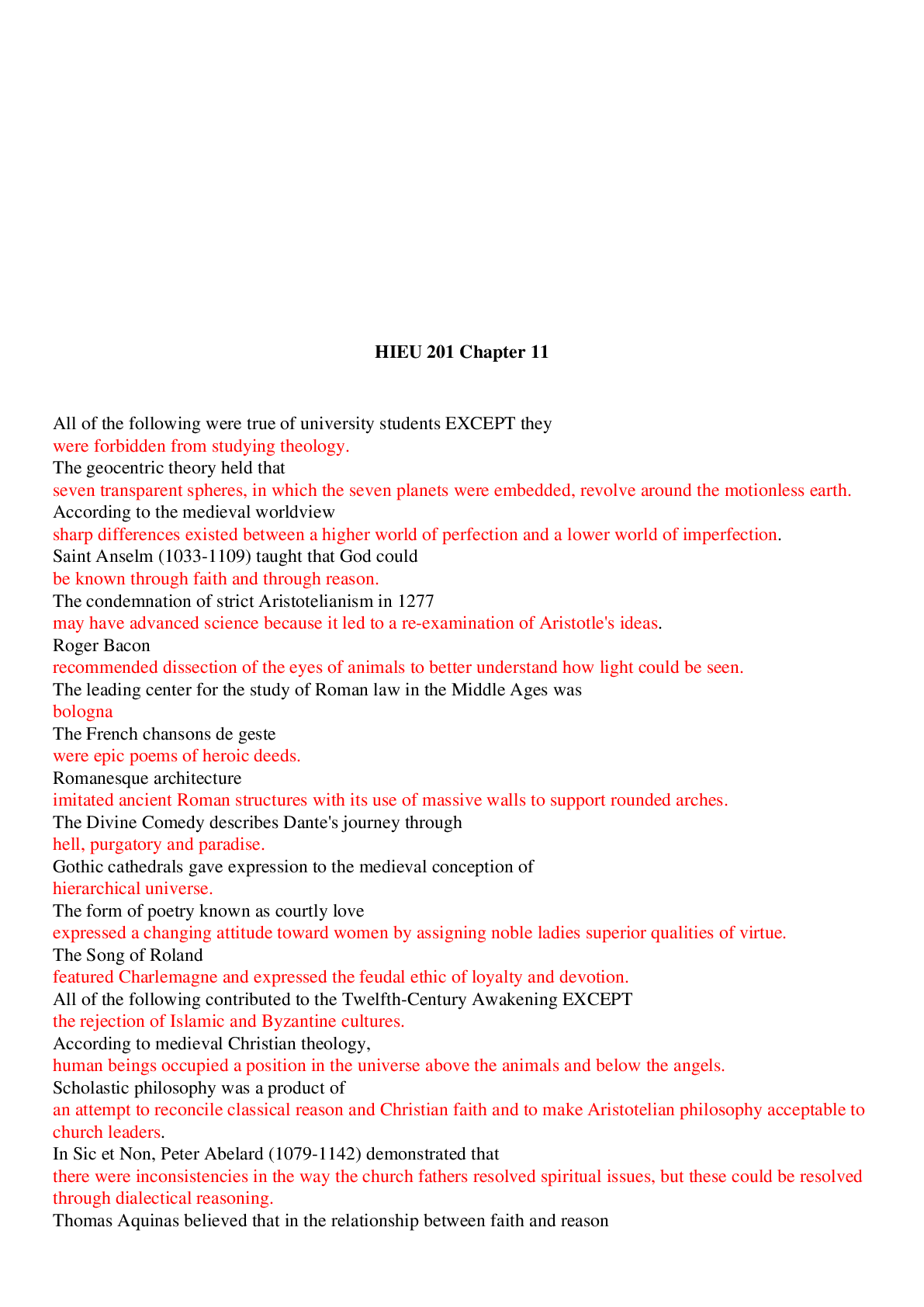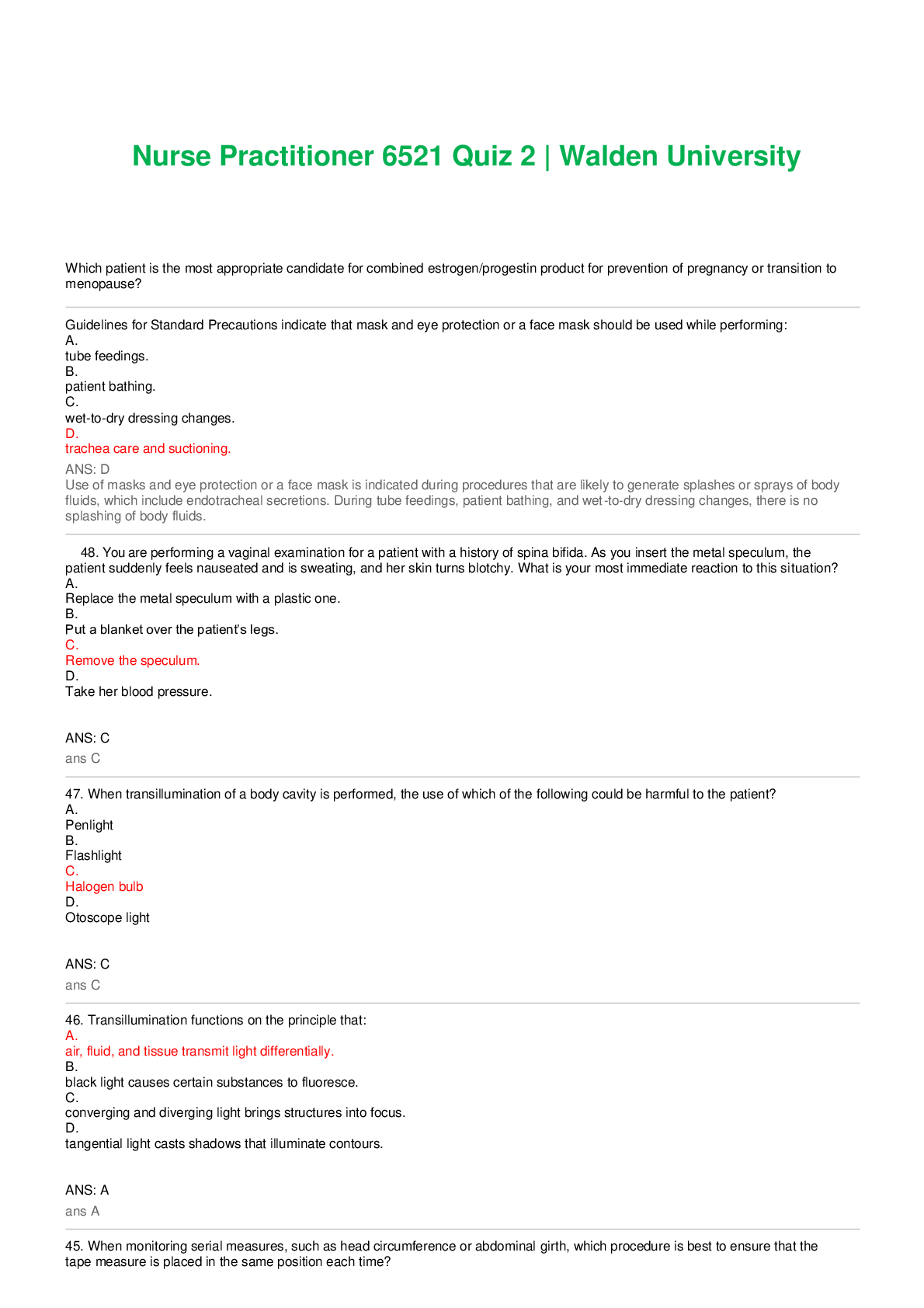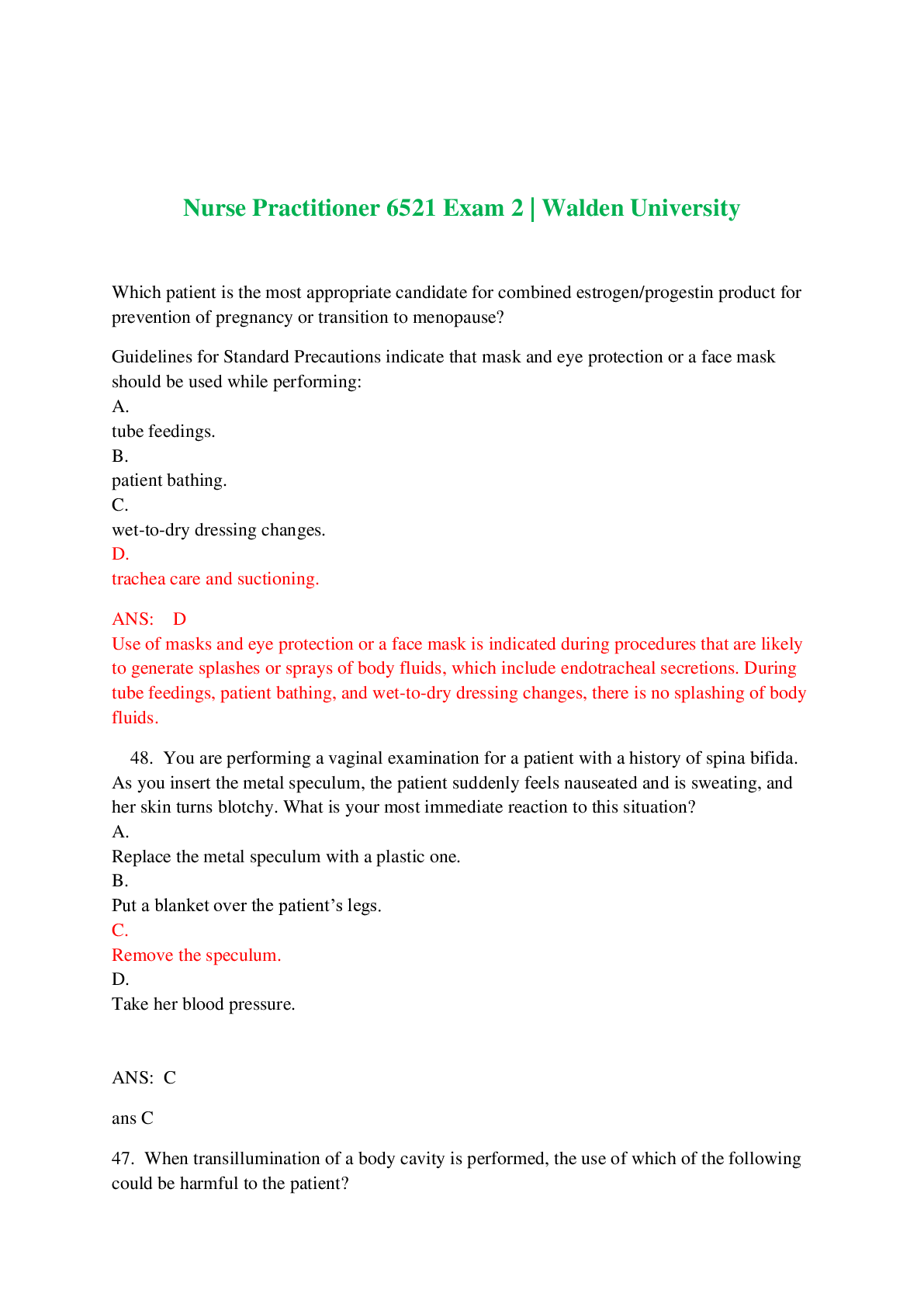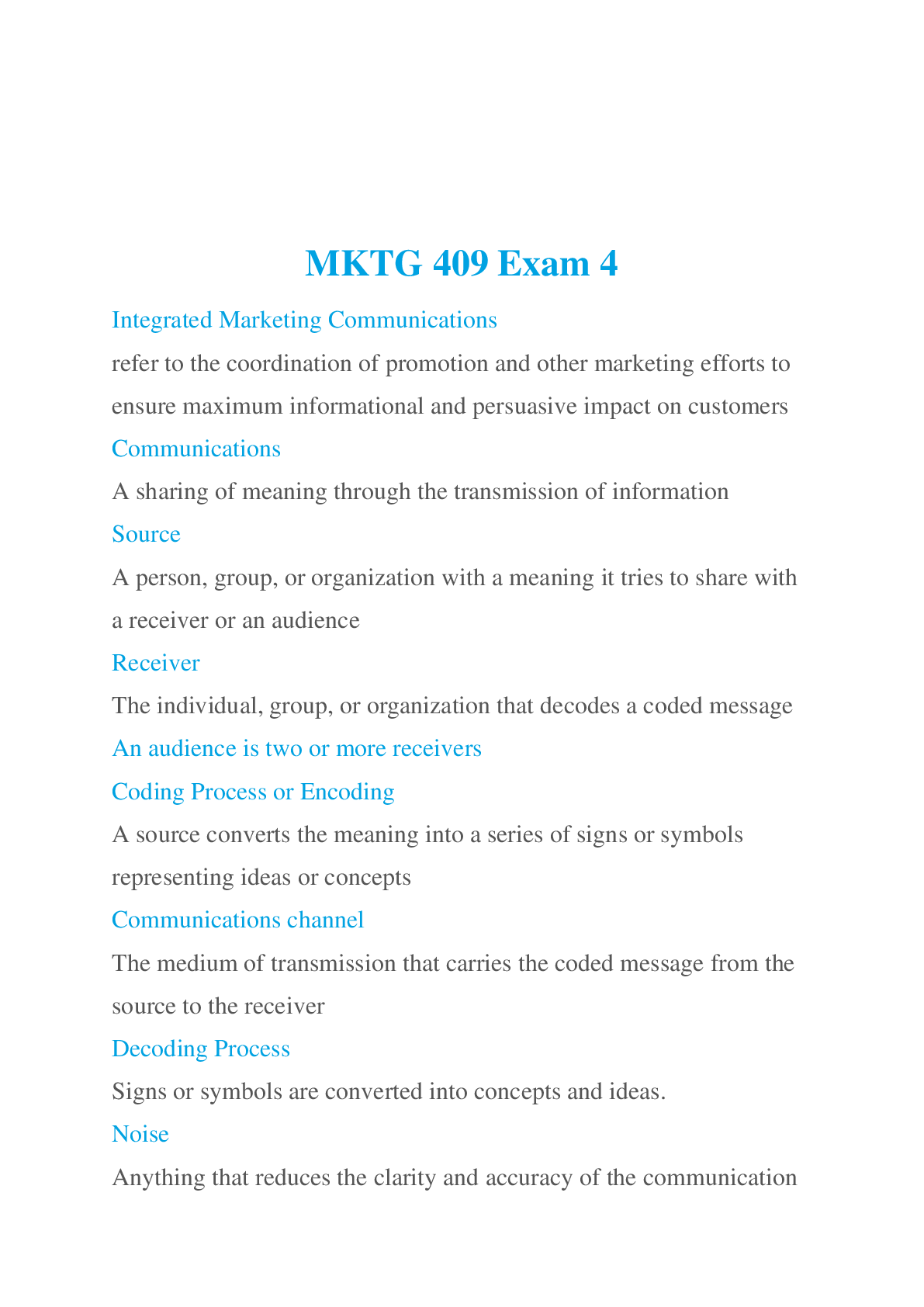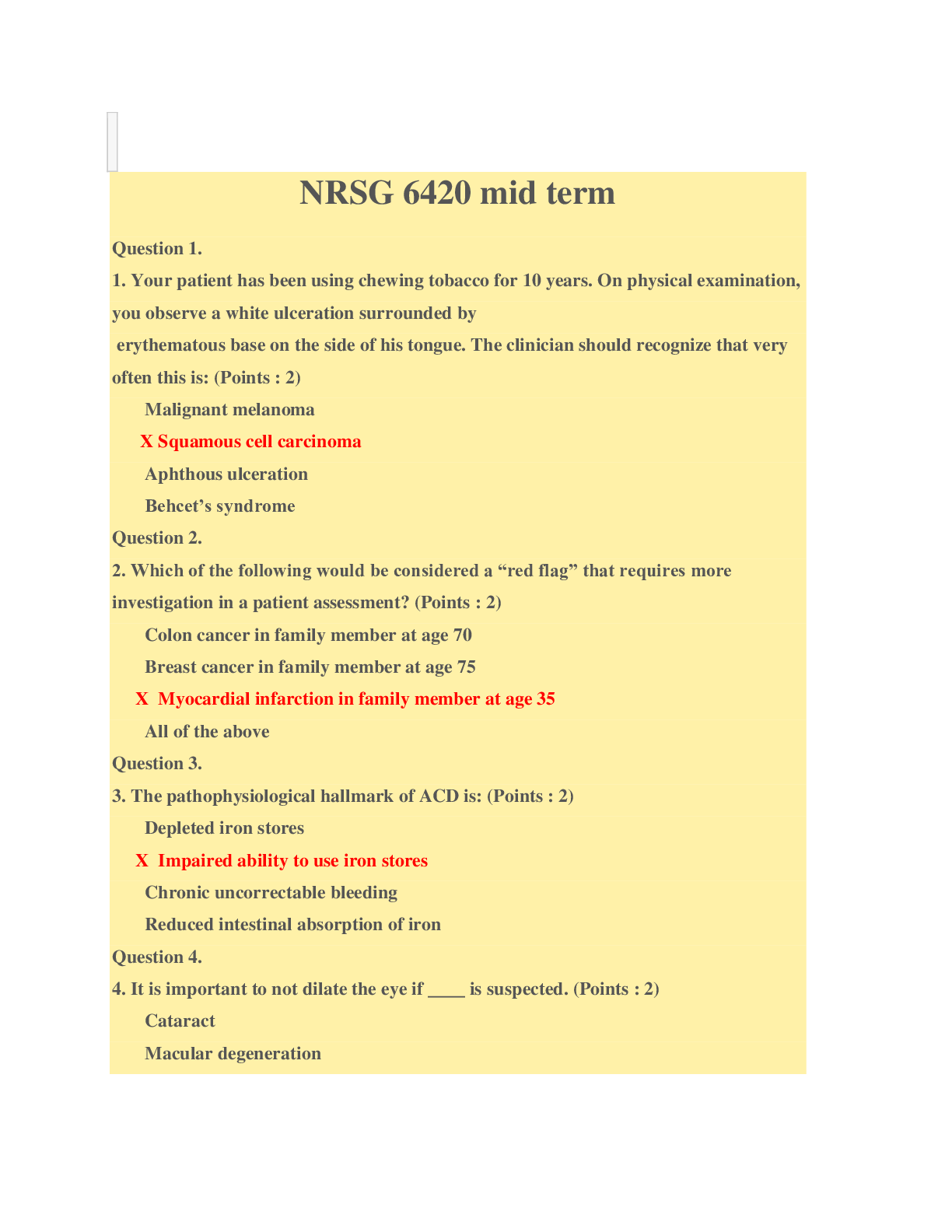Health Care > EXAM > HESI-A2 CHEMISTRY (All)
HESI-A2 CHEMISTRY
Document Content and Description Below
HESI-A2 CHEMISTRY Chemistry note cards for HESI entrance exam Question Answer Matter that has a definite shape and volume solid Matter that changes in volume with changes in temperature and pres- ... sure gas A change of matter is when no change is made to the chemical composition of a sub- stance. physical Simplest of substances and is rep- resented by a letter or letters element Law that states matter can neither be created nor destroyed during a chemical reaction Law of conservation of mass The breaking of bonds and reform- ing of new bonds to create new chemical compounds with different chemical formulas and different chemical properties Chemical reaction 5 main chemical reactions synthesis, decomposition, combustion, single replace- ment, double replacement Chemical reaction in which 2 ele- ments combine to form a product synthesis Chemical reaction that is the break- ing of a compound into component parts decomposition The chemical reaction that is the reaction of a compound with oxy- gen combustion Chemical reaction that consists of an active metal reaction with an ionic compound creating a new compound single replacement Chemical reaction involving 2 ionic compounds; the reactant yields "switched partners" double replacement how elements are arranged on the periodic table by their chemical properties Number that represents the # of protons an element has atomic number average of the masses of each of its isotopes as they occur in nature atomic mass Mass number - atomic number = # of neutrons in an element Columns of the periodic table = groups Rows of the periodic table = periods Group IA = charge +1 Group IIA = charge +2 Group IIIA = charge +3 Group VA = charge -3 Group VIA = charge -2 Group VIIA = charge -1 Charge of noble gases 0 Positively charged ions protons Negatively charged ions electrons Neutral ions neutrons # of proteins in an element = atomic number proteins + neutrons = mass number In reactions, atoms try to reach stable electron configura- tions. chemical reactions take place in the nucleus, to obtain stable nu- clear configurations. nuclear Word used to describe the emission of particles from an unstable nu- cleus. radioactivity The particles that are emitted dur- ing radioactivity radiation 3 types of radiation alpha, beta, gamma Radiation that is the emission of he- lium ions alpha Alpha radiation particles have a charge of +2 How can penetration from alpha particles be stopped? piece of paper Radiation that is a product of the decomposition of a neutron. It is composed of high-speed, high-en- ergy electrons. beta radiation How can beta radiation particles be stopped? aluminum foil radiation is high-energy electromagnetic radiation that lacks charge and mass. gamma What radiation can be stopped by gamma radiation several feet of concrete or several inches of lead? 2 types of chemical bonding ionic & covalent What bond is an electrostatic at- traction between 2 oppositely charged ions? (between metals & nonmetals) ionic A single bond is formed when 2 atoms share a pair of electrons. covalent A bond is formed when 2 electron pairs are shared. double covalent A bond is formed when 3 electron pairs are shared. triple covalent What is the strongest type of chem- ical bond? What is it formed by? covalent bond; non-metals In a covalent bond compound, if the electrons are shared equally, then the bond is . non-polar If electrons are not shared equally in a covalent bond, the bond is . polar is based on the difference in electronegativity values for the elements involved polarity Hydrogen bonding, dipole interac- tions and dispersion forces. intermolecular forces Bond that is the attraction for a hy- drogen atom by a highly elec- tronegative element. hydrogen bond Elements fluorine, chlorine, oxygen and nitrogen are generally involved in a bond. hydrogen Bond that is the strongest of the in- hydrogen termolecular forces The attractions of one dipole for an- other dipole interactions A is created when an elec- tron pair in a covalent bond is shared unequally dipole A dipole attraction is a in- termolecular force. weak The weakest of all intermolecular forces. dispersion forces Dispersion forces are typically found in covalent com- pounds. Non-polar 6.02 x 10^23 is a mole The mass of one mole of a sub- stance atomic mass The part of chemistry that deals with the quantities and numeric re- lationships between compounds in a chemical reaction. stoichiometry To balance an equation, are placed in front of each component. coefficient 4 ways to increase the reaction rate increase temperature, in- crease surface area, increase concentrations and reactants and add a catalyst Increasing the causes the particles to have greater kinetic energy, allowing them to move faster and have a greater chance temperature Accelerates a reaction by reducing the activation energy, or the amount of energy needed for a re- catalyst action to occur. reaction involve the trans- fer of electrons from one element to another redox The loss of electrons oxidation The gain of electrons reduction [Show More]
Last updated: 2 years ago
Preview 1 out of 7 pages

Buy this document to get the full access instantly
Instant Download Access after purchase
Buy NowInstant download
We Accept:

Reviews( 0 )
$10.00
Can't find what you want? Try our AI powered Search
Document information
Connected school, study & course
About the document
Uploaded On
Oct 10, 2022
Number of pages
7
Written in
Additional information
This document has been written for:
Uploaded
Oct 10, 2022
Downloads
0
Views
47

